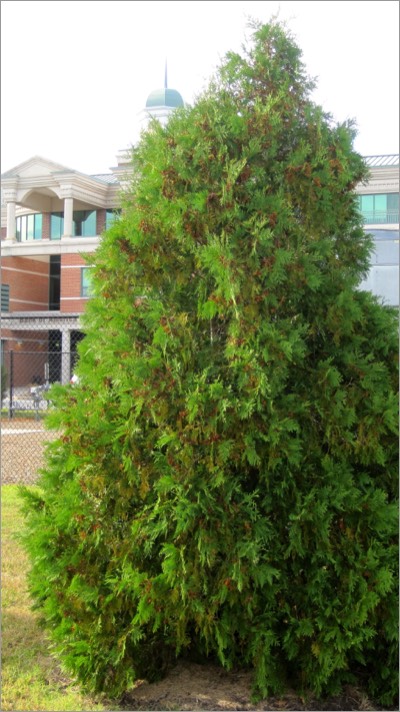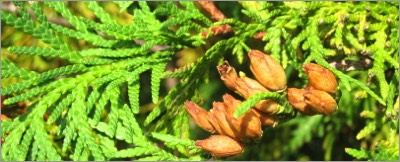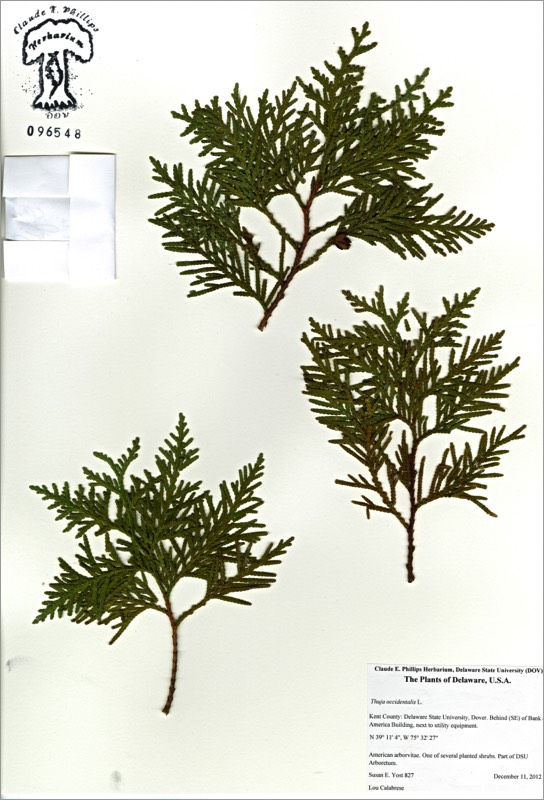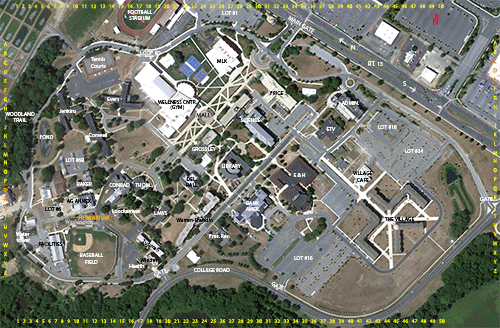*Thuja occidentalis

*Thuja occidentalis
AMERICAN ARBORVITAE
Cupressaceae
N.E. North America
Location: map coordinates T-33 (southeast of Bank of America Building), N 39°11'4'' W 75°32'27''
Planting history: presently unknown.
Description:
*Non-native species (not native to Delaware)
AMERICAN ARBORVITAE
Cupressaceae
N.E. North America
Location: map coordinates T-33 (southeast of Bank of America Building), N 39°11'4'' W 75°32'27''
Planting history: presently unknown.
Description:
- medium-sized evergreen tree, conifer
- etymology: Thuja from Greek name for a juniper; occidentalis = western
- common name “arborvitae” means “tree of life”, for medicinal uses (but contains neurotoxin thujone)
- also known as eastern arborvitae, northern white-cedar, eastern white-cedar (but not related to true cedars [Cedrus])
- leaves scale-like, forming flat sprays
- cones slender, with brown scales
- habitat wet forests, swamps; can by very long-lived; browsed by deer
- popular ornamental
*Non-native species (not native to Delaware)



HIT REFRESH TO START LOCATION GRAPHIC